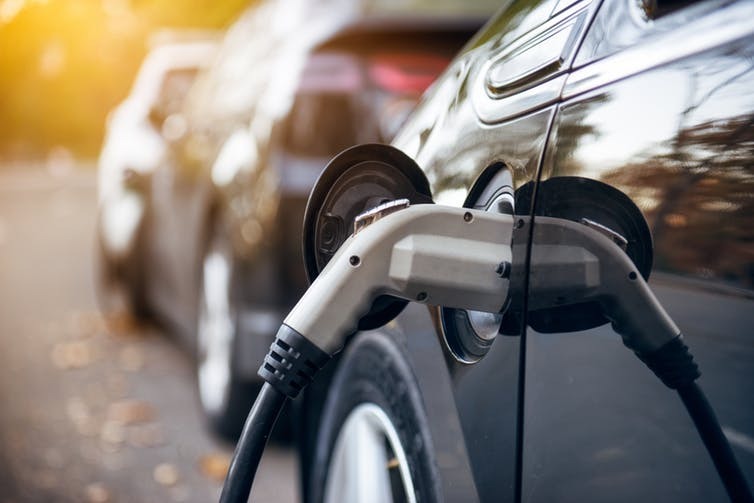Electric cars are often seen as one of the great hopes for tackling climate change. With new models arriving in showrooms, major carmakers retooling for an electric future, and a small but growing number of consumers eager to convert from gas guzzlers, EVs appear to offer a way for us to decarbonise with little change to our way of life.
Yet there is a danger that fixating on electric cars leaves a large blind spot. Electrification would be very expensive for the lumbering lorries that haul goods across continents or is currently technically prohibitive for long-distance air travel.
Beyond all the enthusiasm surrounding electrification, currently light-duty passenger vehicles only comprise 50% of total global demand for energy in the transportation sector compared to 28% for heavy road vehicles, 10% for air, 9% for sea and 2% for rail.
Put simply, the current focus on electrifying passenger vehicles – though welcome – represents only part of the answer. For most other segments, fuels will be needed for the foreseeable future. And even for cars, electric vehicles are not a cure-all.
The unfortunate truth is that, on their own, battery electric vehicles (BEVs) cannot solve what we call the “100 EJ problem”. Demand for transport services are expected to rise dramatically in the coming decades. So the International Energy Agency (IEA) projects that we need to significantly reduce the amount of energy each vehicle uses just to keep total global energy demand in the transport sector roughly flat at current levels of 100 exajoules (EJ) by 2050. More than half of that 100 EJ is still expected to come from petroleum products and, by then, the share of light-duty vehicles in transport sector energy demand is expected to decline from 50% to 34%.

The vast majority of existing passenger trips can be accommodated by existing battery electric vehicles so, for many consumers, buying one will be an easy decision (as costs come down). But for those who frequently take very long journeys, the focus also needs to be on lower-carbon fuels.
Petroleum substitutes could extend sustainable transport to heavier vehicles and those seeking longer range, while using the existing refuelling infrastructure and vehicle fleet. Whereas battery electric vehicles will impose wider system costs (for example, the charging infrastructure needed to connect millions of new electric vehicles to the grid), all the transition costs of sustainable fuel substitutes are in the fuels themselves.
Our recent study is part of a renewed focus on synthetic fuels or synfuels (fuels converted from feedstocks other than petroleum). Synfuels were first made on an industrial scale in the 1920s by turning coal into liquid hydrocarbons using the so called Fischer-Tropsch synthesis, named after its original German inventors. But using coal as a feedstock produces far dirtier fuel than even conventional petroleum-based fuels.
One possible route to carbon-neutral synthetic fuels would be to use woody residues and wastes as feedstock to create synthetic biofuels with less impact on the environment and food production than crop-based biofuels. Another option would be to produce synfuels from CO₂ and water using low-carbon electricity. But producing such “electrofuels” would need either a power system that is very low cost and ultra-low-carbon (such as those of Iceland or Quebec) or require dedicated sources of zero-carbon electricity that have high availability throughout the year.
Pilot plants
Synthetic biofuels and electrofuels both have the potential to deliver sustainable fuels at scale, but these efforts are still at the demonstration stage. Audi opened a €20M e-gas (electrofuel) plant in 2013 that produces 3.2 MW of synthetic methane from 6 MW of electricity. The €150M Swedish GoBiGas plant was commissioned in 2014 and produced synthetic biomethane at a scale of 20 MW using 30 MW of biomass.
Despite the many virtues of carbon-neutral synthetic fuels though, most commercial-scale projects are currently on hold. This is due to the high investment cost of pioneer process plants combined with a lack of sufficiently strong government policies to make then economically viable and share the risk of scale-up.
Government and industry attempts to encourage people to buy electric vehicles aren’t a problem in themselves. Our concern is that an exclusive focus on electrification may make solving the 100 EJ problem impossible. It is too early to tell which, if any, sustainable fuels will emerge successful and so the most pressing need is to scale up production from the current demonstration stage. If not, when our attention finally turns away from glossy electric car advertisements in a few years, we will find ourselves at a standing start in addressing the rest of the problem.
- is University Senior Lecturer in Technology Policy, Cambridge Judge Business School
- is Associate Researcher, Energy Policy Research Group, University of Cambridge
- This article first appeared on The Conversation




